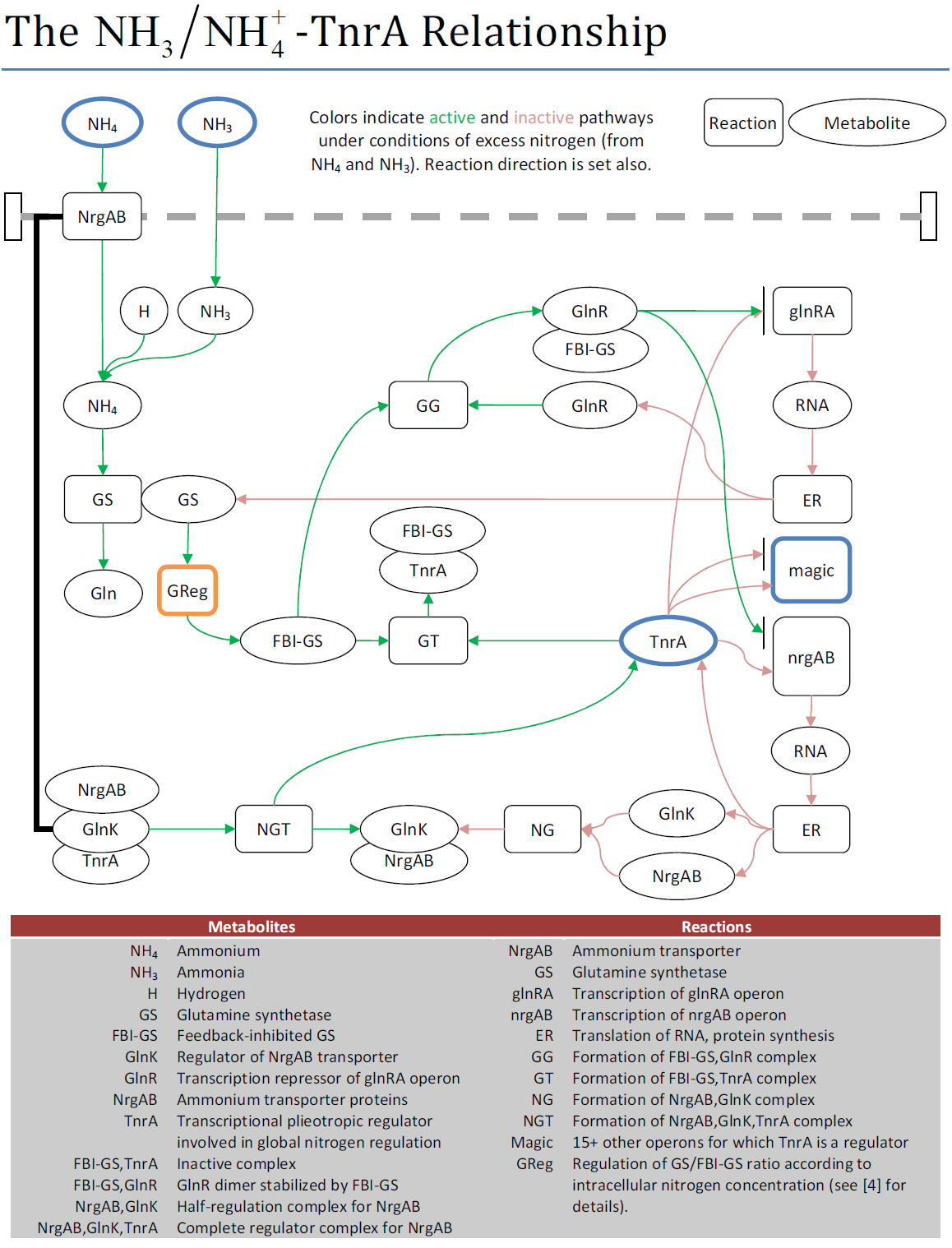Team:Groningen/Modeling
From 2012.igem.org
(Difference between revisions)
| Line 17: | Line 17: | ||
|- | |- | ||
| - | |''' | + | |'''Modeling Targets''' |
<br> | <br> | ||
'''''Germination''''' | '''''Germination''''' | ||
| - | # Effects of h2o and L-alanine concentrations on germination rate. | + | #* Effects of h2o and L-alanine concentrations on germination rate. |
'''''Volatile production''''' | '''''Volatile production''''' | ||
| - | # Concentration and production rates as a function of temperature, volume, type of meat, geometry. | + | #* Concentration and production rates as a function of temperature, volume, type of meat, geometry. |
| - | ''''' | + | '''''Life Support''''' |
| - | # | + | # What nutrients are required to support growth? |
| - | # | + | # What is the growth rate (doubling time) vs. temperature using the minimum media? |
| - | # | + | # What metabolites are required for lycopene production? |
| - | # | + | # What are the rates of consumption for various temperatures as the biomass grows? |
| - | # | + | # What is the total amount of nutrients required to support X amount of biomass? |
| - | # | + | '''''Signaling Functionality''''' |
| - | # | + | # What will the cell do in the presence of large concentration of ammonium? |
| - | + | # Is TnrA a function of glutamine concentration, or the rate of NH4 conversion into glutamine? | |
# Opacity as a function of lycopene concentration | # Opacity as a function of lycopene concentration | ||
| - | |||
|} | |} | ||
Revision as of 20:50, 13 June 2012








| Fig. m2. Reactions involved between ammonium uptake and TnrA. |
References
- SubtiWiki, http://subtiwiki.uni-goettingen.de/wiki/index.php
- K. Gunka, F.M. Commichau, “Control of glutamate homeostasis in Bacillus subtilis: a complex interplay between ammonium assimilation, glutamate biosynthesis and degradation,” Molecular Biology, under review (2012).
- N.A. Doroshchuk, M.S. Gelfand, D.A. Rodlanov, “Regulation of Nitrogen Metabolism in Gram-Positive Bacteria,” Molecular Biology, vol. 40(5), pp. 829-836, (2006).
- Study Guide, Chem153C, University of California, Los Angeles. http://vohweb.chem.ucla.edu/voh/classes%5Cspring10%5C153CID28%5C11AminoAcidBiosynthesisSQA.pdf
Germination
- Effects of h2o and L-alanine concentrations on germination rate.
Volatile production
- Concentration and production rates as a function of temperature, volume, type of meat, geometry.
Life Support
- What nutrients are required to support growth?
- What is the growth rate (doubling time) vs. temperature using the minimum media?
- What metabolites are required for lycopene production?
- What are the rates of consumption for various temperatures as the biomass grows?
- What is the total amount of nutrients required to support X amount of biomass?
Signaling Functionality
- What will the cell do in the presence of large concentration of ammonium?
- Is TnrA a function of glutamine concentration, or the rate of NH4 conversion into glutamine?
- Opacity as a function of lycopene concentration
 "
"









